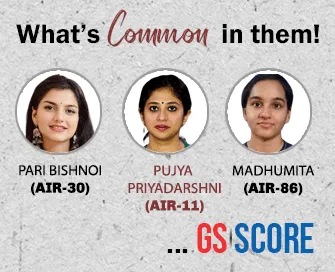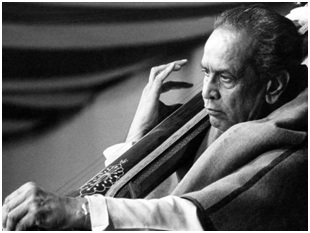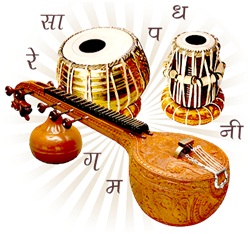

Context
Pandit Bhimsen Joshi is touted as one of the greatest vocalists of all time having profoundly contributed to the Indian classical music field for more than four decades.
- Born on February 4, 1922, this day marks the birth anniversary of the late legendary artist, who received the Bharat Ratna in 2008.
About
Who was Bhimsen Joshi?
- Bhimsen Joshi was born on February 4, 1922, in a family that lived in Dharwad district’s Gadag taluka.

- This was a day associated with the worship of the sun god and celebrated as Ratha Saptami.
- Family background: His family had an environment of music and scholarship as his grandfather Bhimacharya was a well-known kirtankar(a singer of kirtans) and father Gururaj was a teacher armed with a Bachelor’s degree in education and a Master’s degree in languages.
- He was influenced by the music of Kirana gharana‘s Ustad Abdul Karim Khan from a very early age.
Musical training
- In 1933, the 11 year old left home to learn singing through the Guru-Shishya tradition.
- He spent three years in Gwalior, Lucknow and Rampur, trying to find a guru but without luck.
- Eventually, his father tracked him down and brought young Joshi back home.
|
Fun Fact
|
- He began receiving training in Hindustani Classical music under Pt Sawai Gandharva for four years from 1936 to 1940.
- Gandharva trained him in Hindustani Classical music, teaching him the nuances of the ragas that formed the base of the Kirana gharana.
- He stayed at the latter’s house and followed the guru-shishya tradition of gaining knowledge and in return, performing odd jobs.
|
Awards and Achievements
|
Hindustani Classical Music
- Hindustani music is one of the two principal types of South Asian classical music.
- (The other principal type, Karnatak music, is found in the Dravidian-speaking region of southern India.)
- It is found mainly in the northern three-fourths of the subcontinent, where Indo-Aryan languagesare spoken.
- The roots of Hindustani Music is traced to the emergence of Dhrupad & Dhamar. It further developed into Vocal & Instrumental Streams.
- Further emergence of Khayal from Dhrupad as a result of influence of the Mughal Kingdom, Classical Music underwent a change in character, moving from Temples to the Courts.
- Names like Miyan Tansen have been one of the greatest influence on the Hindustani Style.
- Instruments: The most prominent instruments of Hindustani music are the
- sitar(a long-necked fretted lute with about 30 melodic, drone, and sympathetic strings)
- sarod(a short-necked unfretted lute with sympathetic and drone strings)
- sarangi(a bowed fiddle)
- shehnai(an oboe like wind instrument)
- tabla(a set of two drums played by one musician, the right-hand drum carefully tuned)
- tambura(a large long-necked lute with four strings, used only to play the supporting drone, a single repeated chord)

|
Styles of Singing Various styles of singing in the North Indian Style are Dhrupad, Khayal, Thumri, Tarana and Tappa.
|


